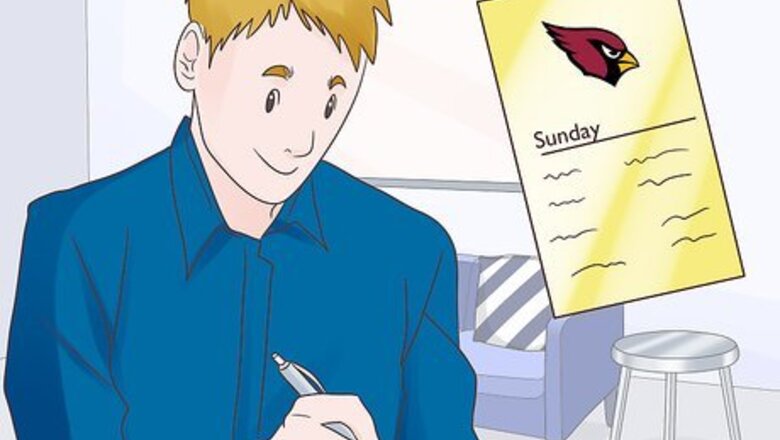
views
Picking a League
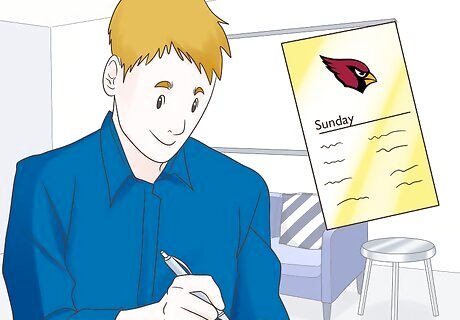
Choose a league that fits in with your time and commitment. Fantasy football, like regular football, relies heavily on competition. Playing in a league allows you to build relationships and camaraderie, as well as providing an extra incentive to choose your players wisely. There are several types of leagues to consider, so try to pick one that fits in with your commitment, your experience, and your seriousness.
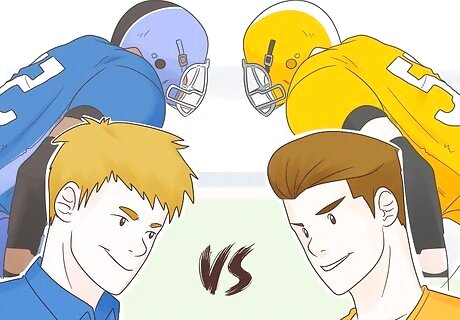
Consider a standard head-to-head league or a standard points league. In head-to-head play, your team matches up against a different team each week, and the team that receives the most points is declared the winner. In a total points league, teams accrue points throughout the season on an ongoing basis. At the end of the regular season, teams with the best won/loss records meet in the playoffs to decide an eventual champion. Head-to-head leagues are fun to play with your friends, so you can have fun trash-talking during the week, leading up to an end-of-season playoff among the teams with the best records. Points leagues are good if you like watching the NFL games over the course of the weekend, giving you more stake in the action when your players are playing and keeping track of the individual players. It's better if you have less time to commit to the season.
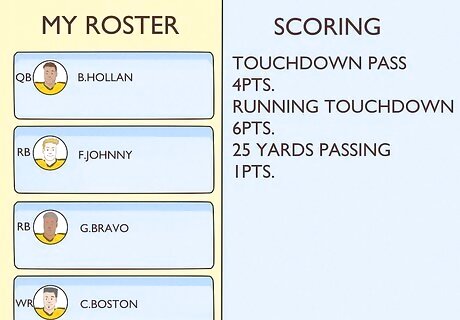
Choose your roster and scoring options. You can choose between various ways of accumulating points for the performance of the players you draft, as well as the structure of the roster. Most normally you'll play the head coach, playing individual players and picking the best guys to give you the best chance of winning. In terms of scoring, most leagues employ a "points for reception" scoring style, which gives points not just for points scored by individual players, but for stats like receptions, yardage gained, and sacks. The score-tallying won't affect the way you "play" fantasy football, but it might affect the way you choose players to play week-to-week. IDP, Individual Defensive Players, options utilize defensive players on an individual basis, as well as using team defensive units. Other leagues simply use team defenses. The additional players and positions to fill require owners in an IDP league to do a lot more research to determine which defensive players to draft and when to draft them, and makes it more difficult to determine which players and positions are most important. However, these leagues can be rewarding to win for big football fans.
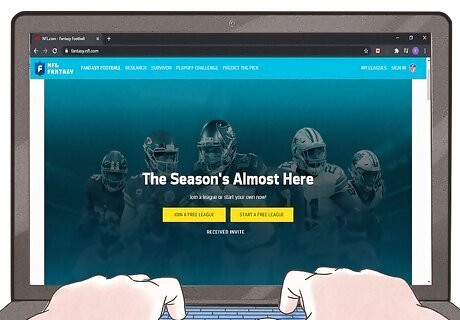
Find a league that fits in with your desires and sign up online. You can sign up for leagues via ESPN and Yahoo, probably the two most popular ways to play. Go to their Fantasy Football tab and search for open standard leagues that are free, or contact friends that play in leagues you'd like to join and get the administrator to give you an invitation. You can start new leagues, but try to get a little experience in different types of playing and play a few fantasy seasons before you try to start a league of your own.
Drafting Players
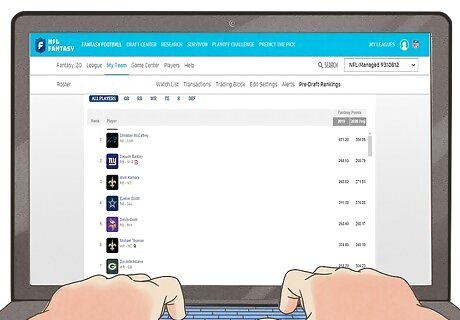
Participate in a draft. Just like regular football, fantasy football leagues hold drafts each season. Players can be "dropped" to become free agents, and trades are possible, but for the most part you'll be assembling your team from the players you draft, so it helps to have some familiarity with the big names and talents. There are two basic types of drafts: In a serpentine draft, owners take turns drafting players in the interest of fairness. For instance, the owner who picks first in odd rounds picks last in even rounds, and so on. In an auction draft, each owner has a predetermined, imaginary budget to spend on players. Players are listed auction-style, going to the team of the owner who bids highest.
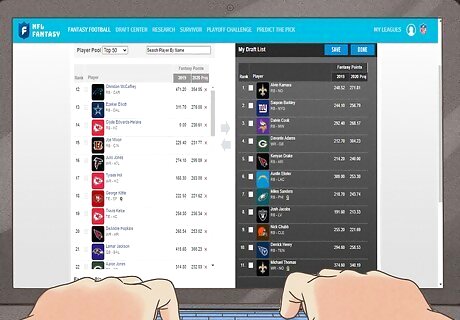
Pick as many of the best players at the most important positions. A mistake a lot of fantasy rookies make is selecting their favorite quarterback right out of the gate and then moving on to other positions. By the time they get around to picking a backup, there's only the 3rd-stringer who played college ball at Southeastern Louisiana Tech left. Oops. Draw up a draft-day cheat sheet. Your cheat sheet should list your ideal picks, as well as back-ups and long-shots. Cover it as well as you can during the draft and keep a running tally of picks you grab and how much money you have left, as well as your ideal picks that get snatched up by someone else. For instance, you could have a few highlighters on-hand to mark who gets what. Usually, Teams that win in Fantasy Football because of their top 5 players that are usually taken in the first 5 picks, so pick reliable veterans that produce points every week in the first 5 picks. If you can pick reliable veterans that are unpopular because of their team having a down year or injury in the first 7 to 9 rounds you will have an even stronger team. Pick up five RB and WRs in the first five picks because the quality drops off real fast and most NFL teams only have one top RB so in reality there are only 32 top RBs. If you look at 3 year averages, you can still take a top QB in round 6. If a top QB falls down to round 4, just take the top tier QB in round 4. Pick up the Kicker last in round 15th. Let everyone else pick the kicker and defense while you get strong backup RB and a strong backup WR. Some teams will even take backup Kickers and Defenses that will just make their team even weaker. Don’t take any rookies unless it is a RB taken in the first 5 of the draft. Rookies disappoint. Of players taken in the top round of the NFL draft, only 9% of rookie QBs, TEs and WRs do average the first year but 35% of RBs do well the first year. This is because a RB position is easier to learn, you just run through a hole in the front line. Don’t take aging players that are going downhill because they are more subject to injuries. RBs over 29 go downhill real fast.
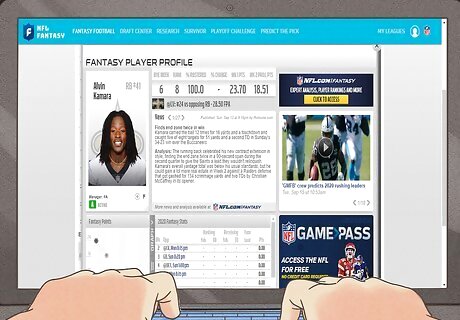
Pick some long-shots. Shake up your roster by drafting a few rookies who could go big. Part of the fun of fantasy football is seeing a sleeper player suddenly score huge points out of nowhere. RBs have the easiest position to learn and tend to break out in year 2, 3 or 4. QBs, TEs, WRs tend to have breakout in the 3rd, 4th or 5th season because their positions are harder to learn. Almost always avoid rookies unless they are taken in the first 5 picks of the NFL draft. You are better off taking WRs that are in their 4th or 5th season with the same team and same QB because they should be about to break out. Avoid injury prone players or players that just had surgery, because they might take longer to get back than you were expecting. Avoid players that have new QB throwing to them or were traded to a new team because they tend to lose points their first year with a new team. Don’t take a backup QB, a backup TE, a backup defense nor a backup kicker because there will be plenty left over after the draft because there is not enough room to stock these players (each team can only have a total of 6 backups and you need backup RBs and backup WRs the most). If you take the TE, K, Def and QB with different bye weeks, then you can waste only one position on the bench and save the bench for breakout RBs and Breakout WRs that can make your team stronger. Another strategy is to take all the players TE, K, Def, and QB with the same bye week and just lose that week. This is not a strategy that is practical because injuries can change your team so you are just throwing away 1 week and you will still have to juggle bye weeks because of injuries during other weeks. Save your hometown heroes until you've got the major choices figured out. If you're a big Dallas Cowboys fan and you want to pick a bunch of their players, you might get into a kind of trap when they all have a bye-week at the same time. Be wary of picking too many players from the same team. Get the best players at the high-stat positions figured out. Remember, you're not making a real football team, so you don't really need role players. They help, but you want guys who are going to build lots of stats.
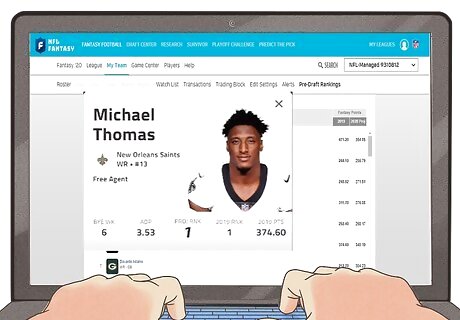
Pick up free agents. In a fantasy football league, a free agent is any player who is not currently on a league team (i.e., did not get picked in the draft or was dropped by a team at some point throughout the season). As the season goes on, a player's real-life performance might inspire you to pick him up as a free agent for your fantasy league. Generally, free agent picks are submitted after the weekly Monday night football game and processed later in the week. If more than one team wants to pick up a free agent, the player goes to the team with the highest waiver wire ranking. Waver wire ranking is determined by a variety of factors, including win-loss record and the number of free agents that team has already added. After adding a player to your team from free agency you go back to the bottom of the waiver wire list. Different leagues might have different methods for calculating these rankings. Pickup top players that were suspended the first 4 weeks and got thrown away by a novice. Pick him up and stash him, 4 weeks goes by fast. Pickup top players that were thrown away because the person had too many players on the same bye week. Many times you can pickup a top Defense, QB or TE because someone had too many of them and had to make room for their studs that are all on the bench for the same bye week. Pickup players that have an injury and are thrown away before the doctors reports come out. Many times these players come back in 1 to 3 weeks and were thrown away too soon because the news over-rated the injury. Pickup and play a defense that is going against a rookie QB where the QB is playing for the first time or the rookie QB is consistently playing bad. Pickup Defenses with a lot of tackles over a defense that scored high because they ran an interception in for a Touchdown. The TDs are unreliable, the tackles are more consistent. Pickup a top defense after 2 or 3 weeks because they are the strong ones. Throw away your current Defense if they are not playing well because you can always pickup another top defense later as players on a team get used to playing together and start to play better. If your kicker or defense suddenly starts to play weak for a few weeks in a row, take a waiver wire kicker or defense that has been playing strong the last 4 weeks. There are usually injuries that have caused the team to play poor that will soon come out in the news. Just simply substitute the strong defense for the weak defense. Look at who they are playing against the next 3 weeks and avoid the defenses that are going to play against strong offenses. If you have a backup WR that is going to play against strong defenses the next 3 to 4 weeks, throw him away and let someone else pick him up. But don't throw away studs, keep them. Many opponents will be duped into playing these players and after they perform poor 3 to 4 weeks, they throw them away and you can pick them up again! It is amazing how many people do not look at the defenses over the next 3 to 4 weeks. After the first week of play, take a top RB on the waiver wire over a top WR because WRs are unreliable week to week and break out RBs are hard to find. After the first week of play, pickup breakout QBs and breakout RBs because they will be snatched up fast after the first week. The waiver wire is usually deep for QBs, TEs, Kickers and Defenses, so it is not necessary to keep backups the first couple of weeks. Stock up on RBs and WRs that are doing well. The ones that don't perform, you can throw away and pickup backup QBs, TEs, and DEFs later. Don't pickup a backup K because it wastes a roster spot.
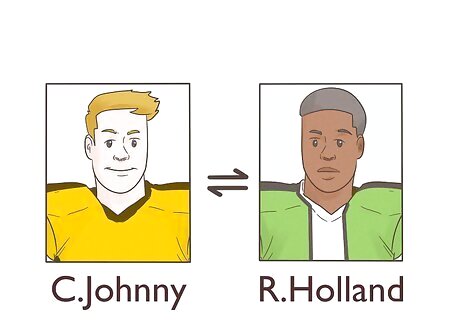
Trade players. Just as in regular football, fantasy owners can trade players. Some leagues have specific trade deadlines established. They may also have all the owners in the league vote on whether or not a trade can proceed. Trades within fantasy leagues can be controversial, and may require the intervention of a fantasy trade referee. There are several trade referee websites where an objective third-party will rule on the validity and fairness of a certain trade.
Playing Week-to-Week
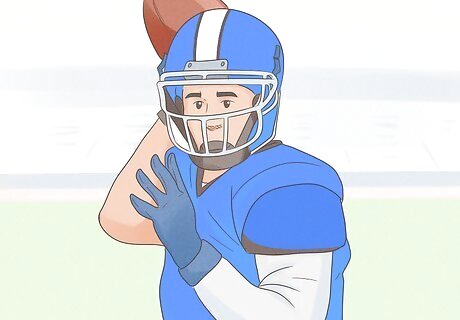
Play the players with the highest potential to succeed in their game that week. From week to week during the NFL season, you'll be able to slot players in all the major positions, picking your starters for the week. Their performance in their game will gain you points in your game. Make sure the player is available. Usually, these players will be labeled with an "A" for active. If they're injured or their team is on bye, they'll be inactive and you'll have to replace them with other players. One particularly helpful stat to take a look at when you're trying to decide which of your QBs and which of your RBs to play, is the strength of the player's opponent for the next week. If you've got the undeniably-great Peyton Manning on your roster, but also the equally-great Tom Brady, see who each of them are playing that week. If Manning's playing the best team in the nation, but Brady's got a team in the gutter, it would help to take that into account.
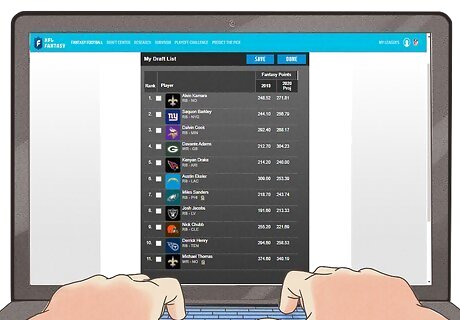
Arrange your roster. Most leagues have a predetermined number of players an owner must have on a roster, and each player is assigned a position. You might also have "starters," which must be used in each game, as well as players that you "bench" for specific games. Owners are required to choose their starters for each week's games before a deadline.
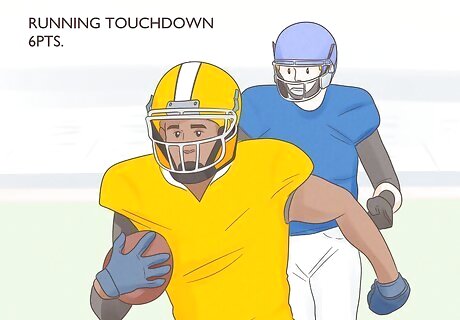
Rack up points. Watch the game and see how your players do! Each individual league will have its own scoring system. However, one thing remains the same: the real-life actions of your players on the field that week will determine how many points your team earns compared to your opponent's team. When the day of games is over, you'll be able to log into your league page and see how you held up.
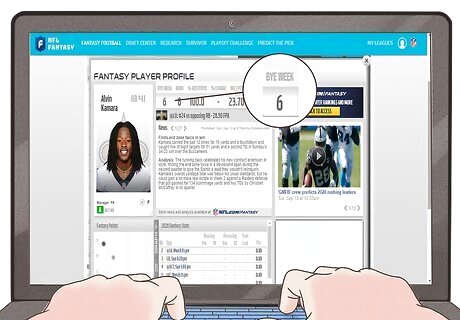
Watch out for the upcoming bye weeks. If you've got a good starting line-up that's working well for you, what are you gonna do in a couple weeks when your starting skills-position players are all going to be out? Who's going to back them up? Draft a team that won't be decimated on one bad bye week and start planning now for those gap weeks. Make sure you have sufficient back-ups without overlapping byes.
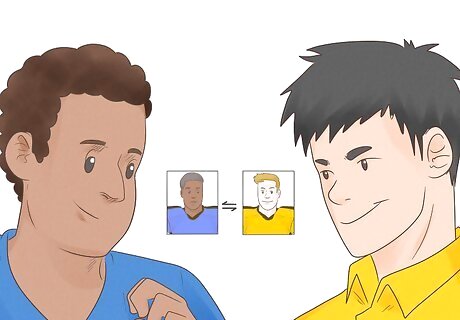
Think about trades as the season progresses. As the draft goes on, have a running list of players you would consider trading or for whom you would trade. For a player you really want on your roster, develop a killer trade strategy beforehand in case he goes to someone else.
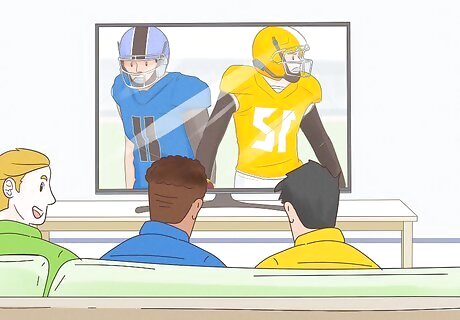
Ride the season out. Fantasy football basically gives your regular NFL obsession an added dimension by giving you more of an attachment to the individual players. You'll suddenly have a big stake in how the Seahawks play if you've got Golden Tate on your fantasy football team, even if you've never been to Seattle. Watch, check the stats, and have fun.




















Comments
0 comment